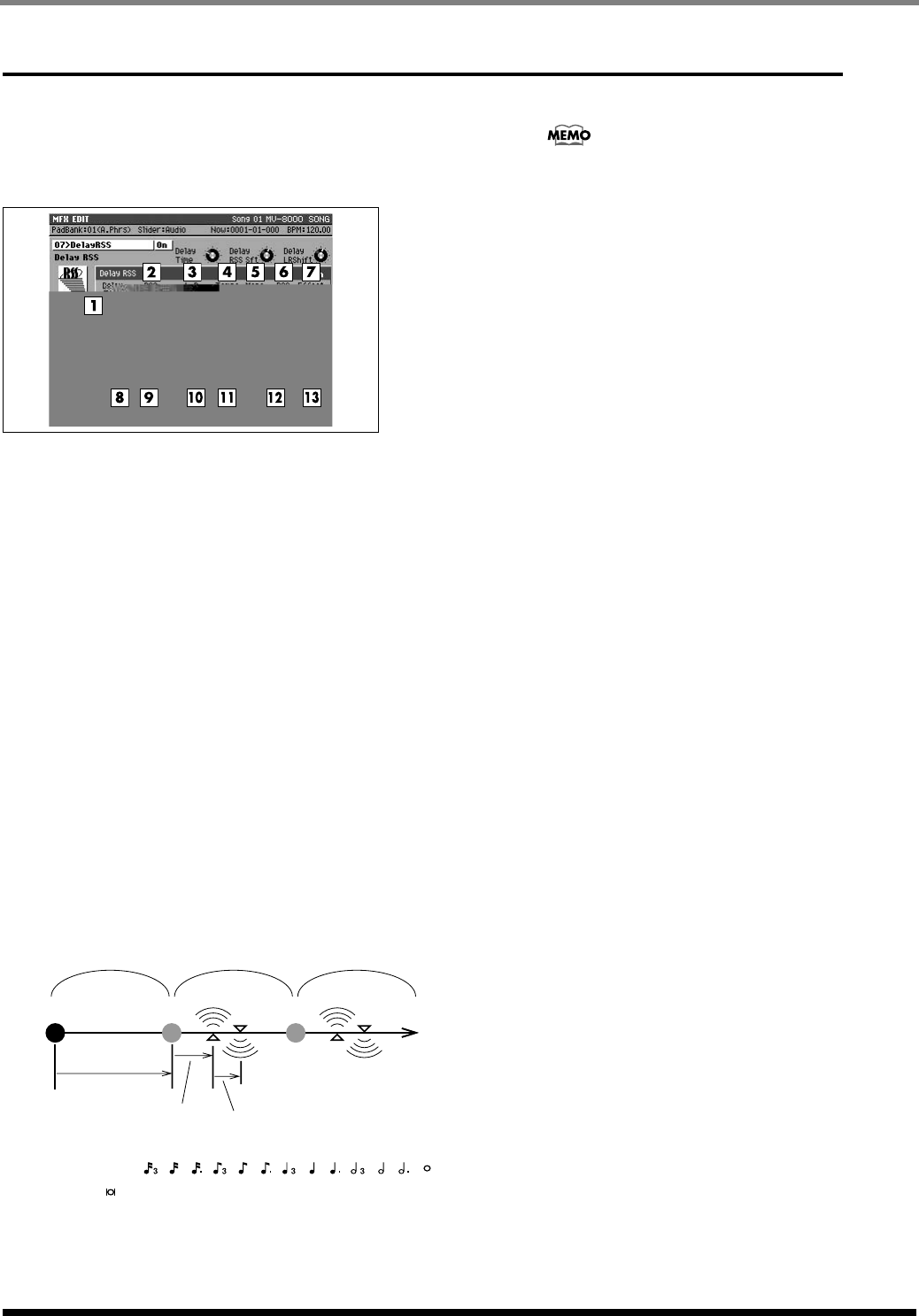
410
Effect Block
07 Delay RSS
Delay (Delay RSS)
This single-input delay features RSS effects for
widened spatial characteristics. This is a variation of
delay type effects.
1.
Delay Time
Value: 0–1200 msec
Sets the delay time, that is, the elapsed time between
the source sound and the delay sound. The settings
range is limited by the RSS shift and L-R shift
(explained below) settings. When Tempo Sync
(explained below) is active, this setting is not effective
and you cannot make this setting.
2.
RSS Shift
Value: -1200–0–+1200 msec
The delay time only of the RSS-processed sound is
further increased to shift expression of the sound.
This setting is limited by the delay time and L-R shift
settings.
3.
L-R Shift
Value: L1200–R1200 msec
Of the left and right RSS output, the delay time is
increased on only one side, shifting expression of the
sound. Depending on the time setting and RSS shift
settings, the settings range may be limited.
fig.10-17e
4.
Tempo Sync
Value: OFF, , , , , , , , , , , , , ,
Set this when synchronizing the delay time to the
song tempo. When not synchronizing, set this “OFF.”
When you select the note, the delay time is set to the
note length corresponding to the tempo.
If the set note length is longer (or shorter) than the
possible range of delay time settings, the delay time
can not correspond to the note length. If “?” appears
before the note symbol you set, it is because the
upper (or lower) limit of the setting range has been
exceeded, and that the synchronization is not
correct. Furthermore, the precision of the delay time
and song tempo differ. If left to develop over long
periods, the two may drift apart.
5.
Mono.D (Monaural Delay Level)
Value: 0–100
Sets the volume of the monaural delay sound.
6.
RSS Level (Delay RSS Level)
Value: 0–100
Sets the volume of the Delay RSS sound.
7.
Effect Level (Effect Total Level)
Value: 0–100
Use Total Level to specify the overall volume of the
effect while maintaining the balance between Mono
Level and RSS Level.
8.
Low Damp Freq
Value: 50 Hz–4000 Hz
Sets the upper frequency limit of the range to be
damped by “Low Damp.” The Low Damp function
damps the low frequency band of the delay sound
quicker than other bands, which makes for a clearer
delay effect.
9.
Low Damp Gain
Value: -36 dB–0 dB
Sets the degree of the Low Damp.
10.
High Damp Freq
Value: 1 kHz–20 kHz
In the natural world, the high frequencies in echo die
out quicker than other bands. High Damp, by
attenuating the higher frequencies first, makes the
delay sound more natural.
Sets the lower frequency limit of the range to be
dampened.
11.
High Damp Gain
Value: 36 dB–0 dB
Sets the degree of the High Damp.
RSS Shift
(Delay)Time
L-R Shift
R
L
R
L
Original sound
ECS05_manual_e.book 410 ページ 2005年11月30日 水曜日 午前11時14分


















